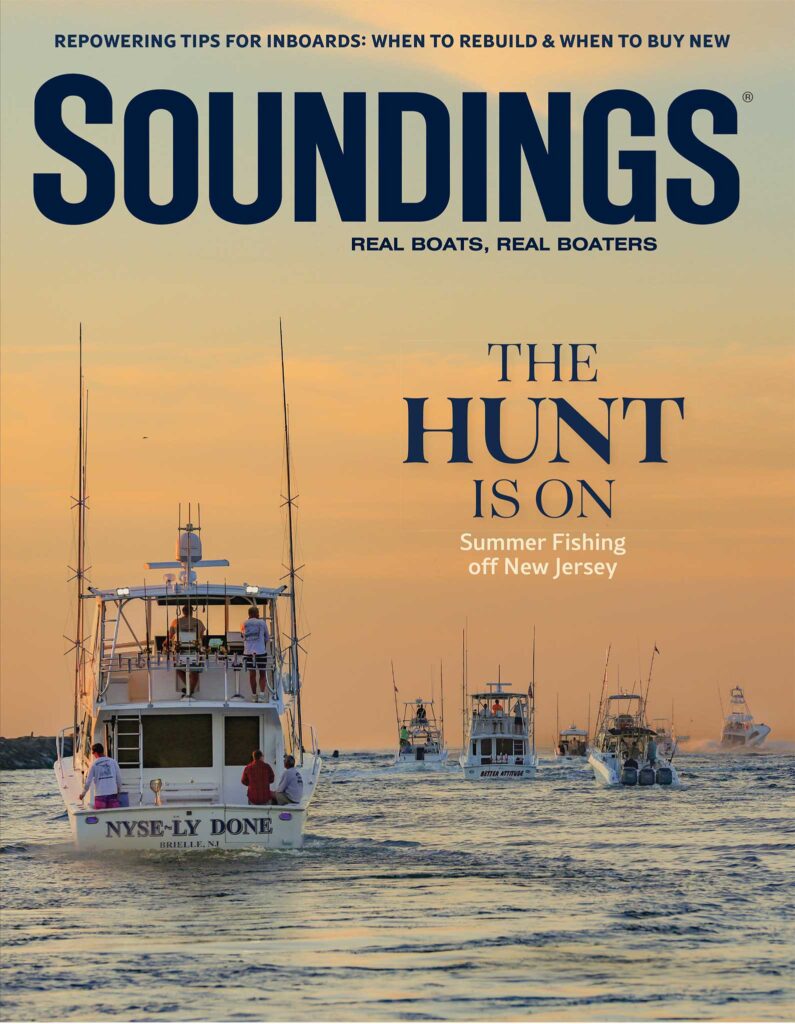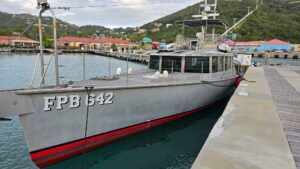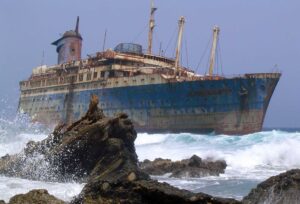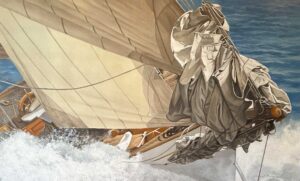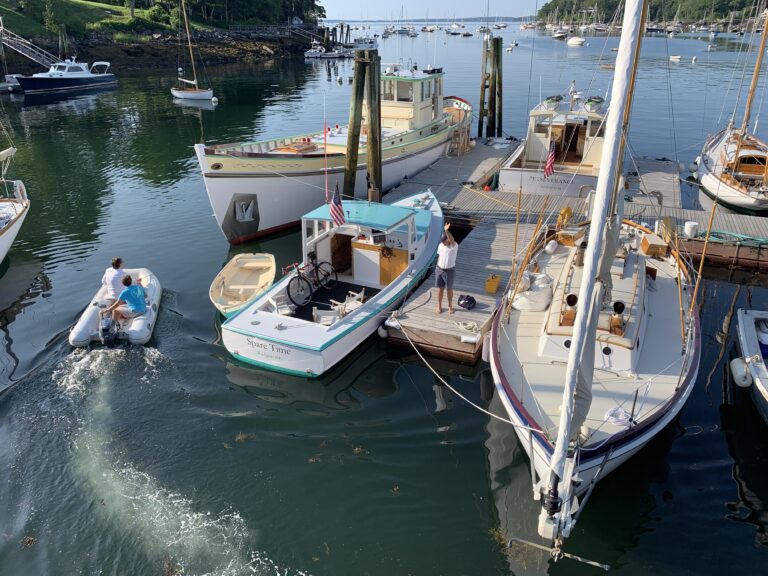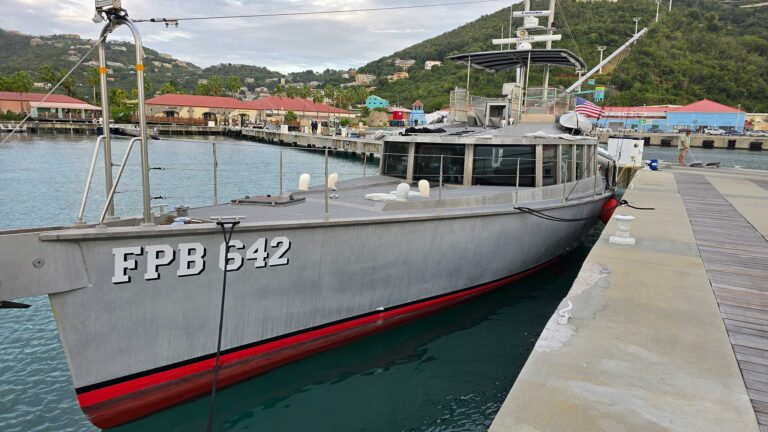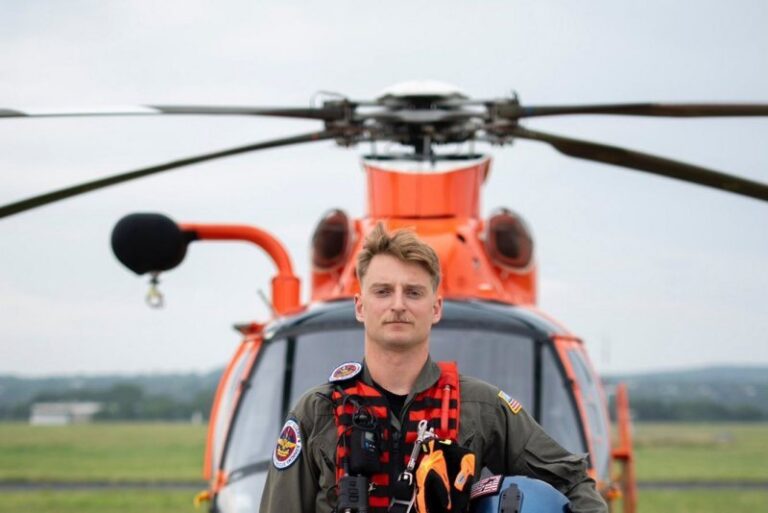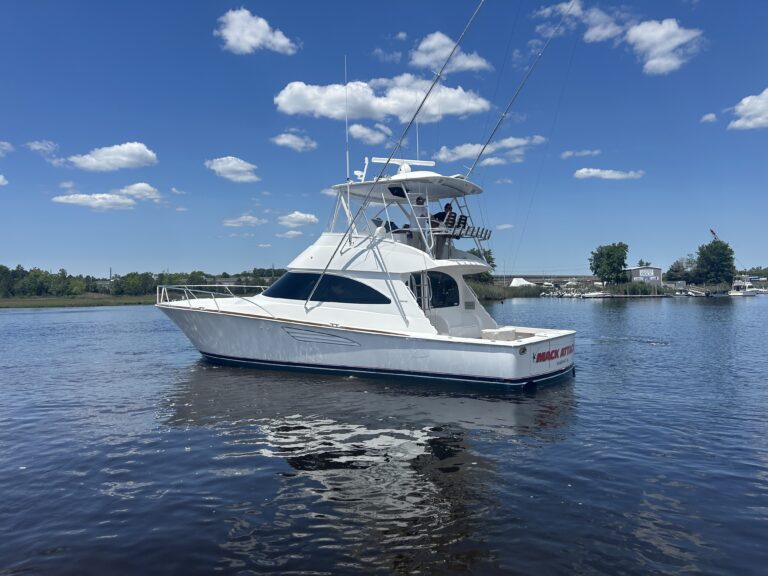
The director of Mystic Seaport’s Henry B. DuPont Preservation Shipyard and the man who led the construction of the schooner Amistad and the restoration of the Charles W. Morgan lets us quiz him.
First memory of being on a boat: While my mother would never admit it, I always believed I was conceived on my father’s first boat — an ancient Cape Cod pound-net boat he purchased in Greenport, New York, and rebuilt in the backyard of our brand-new suburban development home in East Meadow, Long Island, before I was born.
I grew up hearing stories of her rebuild — bright, late-night spotlights, noisy power tools, pounding hammers and unhappy neighbors. He was as obsessed with boats as my brother and I have been.
First boat you owned: I was probably around 8 when my parents got me a plastic boat. It was sized just about right — maybe 5 or 6 feet long, narrow with two small pontoons aft. We’d take her to a local stream just off the highway near our home. My first real boat was a birthday gift when I was 13 — a 10-foot, 1962 Nutshell dinghy, Norwegian-built, molded mahogany, with a blue hanging lug rig. I still have her bones in our backyard.
In general, power or sail and why: Generally sail, I’ve never trusted engines. I tell everyone I learned how to curse watching my father try to start our 25-hp Johnson outboard on our 18-foot Scottie Craft every Saturday morning. This was in the 1950s — I know engines have come a long way, but I’ve never lost the distrust. You can generally count on some kind of breeze sooner or later, and the tide always turns fair sometime.
Last or current boat: I have far too many. Our principal boat is a 1963 Allied Seawind ketch named Vayu (Vedic god of wind). I salvaged her after Hurricane Katrina from Biloxi, Mississippi. I was there gathering live oak for the Charles W. Morgan restoration and ran across her in a yard. She cost more to move north than she cost to buy. Other boats include a 1974 24-foot Lyman Sportsman, a 1950 Beetle Boat 24 cabin cruiser in need of restoration, a 1947 13-foot Beetle Boat Swan catboat under restoration in my driveway, several aged dinghies, and a 17-foot yawl boat formerly hanging on stern davits off the schooner Mystic Whaler. While I make my living around wooden vessels, I’m a great advocate of fiberglass. I think it’s high time FRP gets more attention as a “historic material.”
Favorite boat you’ve owned: I’d have to say the 17-foot yawl boat. She was built by Allan Vaitses in Mattapoisset [modeled on] an 1880s Boston pilot “canoe” — local vernacular for the boat used to transfer pilots from a schooner to or from an in or outbound vessel. He built three that I’m aware of. She’s got an 8-hp diesel and a good pair of oars. I’ve had a tremendous amount of fun in her, legal and illegal and some not fit for a family publication. All in all a very good and unique boat; I keep her now in anticipation of my eventual “Viking funeral.”
Your dream boat: I used to want a Chesapeake Bay-style schooner of the late 19th century so bad I could taste it — and literally have while trying to save an old hulk. Today I’d go for a nice 50-foot Alden schooner — comfortable, yet light and handy enough for me and my wife to handle.
Most rewarding professional experience: Leading Mystic Seaport’s effort to restore the Charles W. Morgan was fantastic, but building and sailing Amistad her first season was somewhat more rewarding. To see a ship take form from nothing but space and a pile of logs was fabulous. I feel being involved in a lead role in that project enabled me to do something of significance and relevant to today’s societal needs — addressing issues of race in our country. Building Amistad allowed me to make use of all my past experience for something more broadly meaningful.
Scariest adventure aboard a boat: Truth be told, I’m perceived as having more deep-sea experience than I actually do, so I’ve got no hair-raising stories of storms or shipwrecks. One of the most profoundly scary yet important learning experiences I had was soon after I graduated from SUNY Maritime College in 1972. I was newly hired as captain of the 100-ton schooner Mystic Whaler. It was fall, and we were shifting our passenger-carrying operation from Mystic to Annapolis. I had brought on several of my classmates to help move her down the coast. As was common practice in those days, someone had brought along a couple of joints. We had just spent four years cruising around New York Harbor every spare minute after classes, so we were feeling pretty cocky — good weather, four third mates on a fair-size schooner, headed south. All went well with a fair tide steaming down the East River, enjoying the nighttime skyline — that is, until we cleared the Verrazano Bridge. We hadn’t really been carefully monitoring our position, just following the path seaward. Suddenly we were confronted with the vast opening to the sea, with multiple channels, myriad flashing lights, heavy tug and ship traffic, and a strong ebb. It took us several minutes to gather our wits and determine our position as we confounded many an inbound pilot with our maneuvers. Well, that was the first and last time I got high underway.
Most memorable experience aboard a boat: Through the years there have been plenty of memorable moments, but one that sticks out goes way back to the training ship Empire State IV. I was a “mug” — a fourth-classman — and we were reminded we were lower than whale sh** many times each day. The schedule was pretty rigorous. One night on the 12-4 watch, I was so tired I literally fell asleep standing up and woke up on my knees. When I realized what was happening, it really filled me with a sense of joy and fulfillment. Here I was, midocean, just starting to live the dream I’d held for my future, challenging myself to limits with complete surrender to the responsibility, not just of a job but a way of life. I wasn’t in suburban Long Island anymore.
Longest time you’ve spent aboard: While I spent nearly 20 years operating passenger and educational sailing vessels, I usually tried to keep a place ashore. In the late ’70s I had gotten divorced and wound up living aboard for about three years straight. Enough time to say I’d done it, but also enough time to know I want a little more space, privacy and central heating.
Favorite destination so far: I’d say the BVI back in the late ’70s. I’ve not been back since the early ’80s, but I operated the schooner Voyager out of St. Thomas a couple of winters and had a blast.
Place you still want to get to on your own bottom: Cuba. I was fortunate enough to have been aboard Amistad when she visited Havana in 2010. I’d always wanted to go there, ever since I was a kid and told I could not. The colonial history, prerevolutionary-era romance, the tenacity of her revolutionary leaders, the geography of the southern coast have always had an inexplicable allure. Having spent a few days there only strengthens my interest. I just want to get there before it gets homogenized by open trade with us. I may not want to go deep-sea in our Seawind, but Cuba’s a pretty easy shot.
Favorite nautical book: Joseph Conrad’s Typhoon, the story of a captain who by chance of fate had never really experienced the full terror of responsibility for a ship in peril. In many ways I see parallels in my career. Whether I’ve been blessed or cursed, or from skill or luck, I’ve kept out of real trouble my whole life. I take Conrad’s story as a warning to myself to always be prepared for something beyond my control that could overwhelm.
Favorite nautical cause you support and why: Mystic Seaport Museum. When I was a child my family would make an annual pilgrimage to Mystic. My father, while not a professional seaman, had a deep love of ships and the sea. We always had some kind of boat, and our home was full of paintings of ships and artifacts he had gathered along the way. Mystic Seaport was the real thing — walking the decks of the historic ships, looking aloft, smelling the pine tar all combined to feed my imagination and ultimately led me to this way of life. Little could I have imagined one day I’d be responsible for the care and keeping of these same ships.
Favorite quote about the sea: Conrad, but I don’t remember from where: Seamen speak to each other as landsmen only think to themselves. To me it articulates the way camaraderie and relationships, not always friendships, develop on board. Little or no pretense, and if there is, you quickly see through it. The immediacy of the moment demands nothing less than nearly stream-of-consciousness communication. This is one of the things I love most about the path I followed.
Why this life? Years ago a girlfriend asked me: “If you could be anyone, who would you want to be?” I thought for a short while and responded: “I just want to be me — I’m kind of interested to see how it all turns out.”
May 2015 issue

